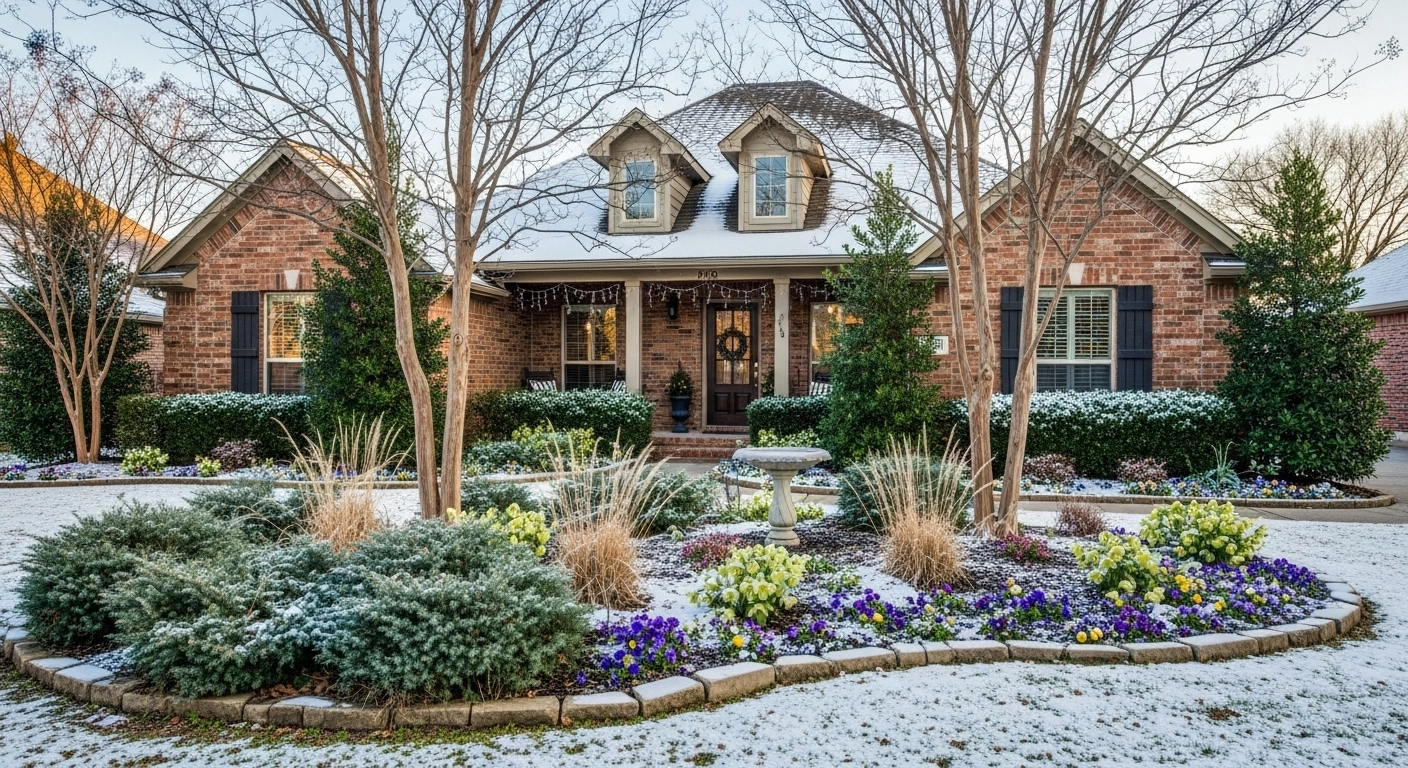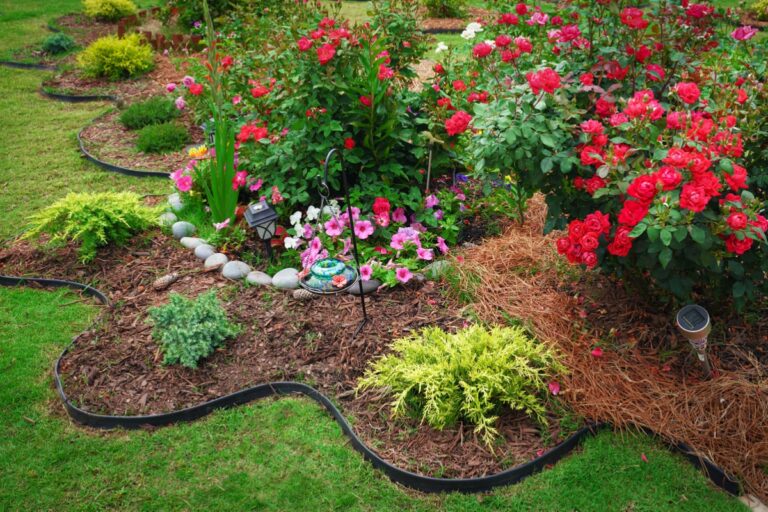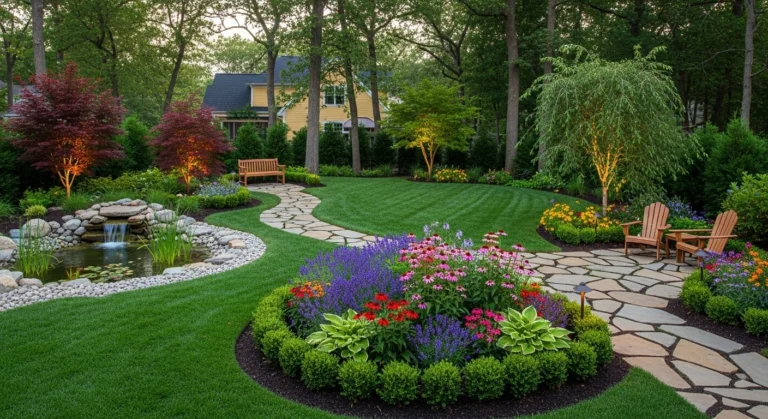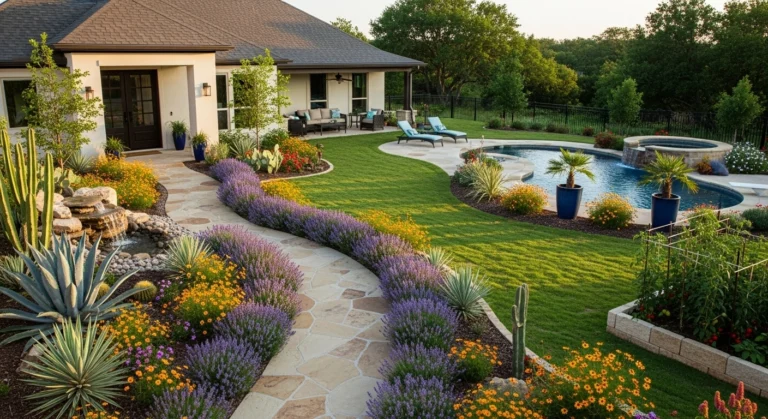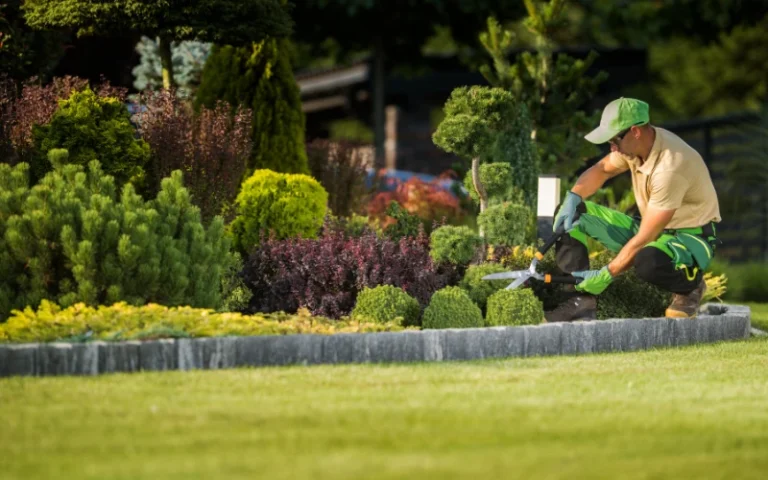It’s the middle of February in Lubbock, and you’re staring out at a landscape that looks like it’s been through an arctic battlefield – brown, crispy shrubs that were green just last week, palm trees with blackened fronds, and that sick feeling in your stomach as you mentally calculate the replacement costs for everything that didn’t make it through our latest polar vortex. Sound painfully familiar? Every winter, I watch homeowners across West Texas discover the hard way that our climate doesn’t just challenge plants during summer heat – it can be equally devastating when temperatures plummet without warning. The cruel irony is that many of these plant casualties were completely preventable with the right protection strategies, but most folks don’t realize they need winter prep until they’re already surveying the damage. After two decades of helping Lubbock families navigate our unpredictable winters, I can tell you that the difference between winter survivors and winter casualties often comes down to just a few hours of preparation work done at the right time.
Here’s the reality that successful West Texas gardeners understand – winter plant protection isn’t about creating a greenhouse around your entire landscape, it’s about strategic intervention based on plant vulnerability and weather timing. The homeowners whose landscapes emerge from winter looking great aren’t necessarily the ones who spent the most money or covered everything in sight; they’re the smart ones who learned to read weather patterns, understand plant cold tolerance, and implement targeted protection when it actually matters. Our Lawn Care Lubbock approach focuses on building winter resilience through strategic plant selection and timely protection measures that work with West Texas conditions rather than against them. When you understand which plants need protection, when they need it, and how to provide it effectively, winter becomes a manageable challenge rather than an annual disaster. The key is shifting from reactive damage control to proactive plant protection that keeps your landscape investment safe while minimizing the time, effort, and expense required to get through our challenging winter months.
Understanding West Texas Winter Challenges
Our High Plains climate creates unique winter stress conditions that make standard cold protection advice practically useless for Lubbock landscapes. We’re not dealing with gradual temperature drops and steady winter weather – we face sudden arctic blasts that can drop temperatures 50 degrees in 24 hours, followed by warm spells that confuse plants into breaking dormancy early. The combination of extreme temperature swings, low humidity, persistent winds, and unpredictable timing makes winter protection both critical and challenging.
The damage mechanisms go beyond simple freezing. Wind desiccation can kill evergreen plants even when temperatures stay above freezing, while rapid temperature fluctuations cause bark splitting and root damage that may not show up until spring growth begins. Sun scald affects thin-barked trees during clear, cold days when intense sunshine warms bark during the day but temperatures plummet at night.
Plant selection mistakes compound winter problems exponentially. Many beautiful plants sold in our garden centers are rated for warmer zones and simply cannot survive West Texas winters regardless of protection efforts. Understanding true cold hardiness versus marketing claims prevents expensive lessons and repeated disappointments.
Our Seasonal Landscape data shows that properly protected landscapes lose 80% fewer plants during severe winter weather events compared to unprotected properties. The difference isn’t luck – it’s understanding what protection works and when to implement it.
Strategic Plant Protection Approaches
Identifying Vulnerable Plants
Not all plants require winter protection – understanding which ones need help prevents wasted effort on hardy species while ensuring vulnerable plants get adequate care. Plant vulnerability depends on factors like cold hardiness rating, maturity, planting location, and recent stress levels from drought or disease.
Newly planted material represents your highest risk category regardless of cold hardiness ratings. Plants installed within the past year haven’t developed the extensive root systems and energy reserves needed to survive extreme cold stress. Even hardy natives can succumb during their first winter if not properly protected.
Your vulnerability assessment checklist:
- Tropical and subtropical species – hibiscus, bougainvillea, citrus, and palm trees require protection below 32°F
- Marginally hardy perennials – rosemary, lavender, and Mediterranean herbs that may survive mild winters but fail during severe cold
- Young trees and shrubs – anything planted within the past two years needs extra protection regardless of ultimate hardiness
- Plants in exposed locations – specimens facing north winds or located in open areas without natural shelter
Microclimates within your property create significant variations in protection needs. Plants near south-facing walls or under tree canopies may survive conditions that kill identical plants in exposed locations just yards away.
Timing Your Protection Efforts
Weather timing makes the difference between effective protection and wasted effort. West Texas winter weather can change rapidly, making rigid schedules impractical and potentially counterproductive. Learning to read weather patterns and respond appropriately separates successful winter plant management from frustrated guesswork.
Monitor extended weather forecasts starting in November, paying attention to temperature trends rather than single-day predictions. When forecasts show nighttime temperatures dropping into the mid-20s or below, it’s time to implement protection measures for vulnerable plants.
The “36-hour rule” guides protection timing – implement protection measures 24-36 hours before predicted cold arrives to avoid last-minute scrambling in deteriorating weather conditions. This timing allows you to work safely and thoroughly while giving protection materials time to settle properly.
Your protection timing strategy:
- Pre-position materials in October so everything is ready when weather threatens
- Implement protection when temperatures will drop below 28°F for more than 4-6 hours
- Remove coverings during warm periods to prevent overheating and disease development
- Plan for multiple freeze/thaw cycles throughout winter rather than one-time installation
Don’t wait for official freeze warnings from weather services – they’re often issued too late for effective plant protection and may not reflect microclimatic conditions in your specific location.
Physical Protection Methods
Covering plants effectively requires understanding how different materials work and which protection methods suit specific plant types and weather conditions. The goal is maintaining temperature stability while allowing air circulation and preventing moisture buildup that promotes disease.
Frost cloth represents the gold standard for temporary plant protection, providing 4-8 degrees of temperature protection while allowing air and moisture exchange. Unlike plastic sheeting, frost cloth won’t trap moisture or cause overheating during sunny days following cold nights.
Effective covering techniques:
- Use stakes or frames to keep covering materials off plant foliage – direct contact can cause more damage than no protection
- Secure covers thoroughly but allow bottom edges to stay open for air circulation
- Layer materials for extreme cold – multiple light layers work better than single heavy coverings
- Remove covers during warm days to prevent overheating and disease promotion
Mulching provides critical root zone protection by insulating soil and preventing freeze/thaw cycles that can heave plants out of the ground. Apply 4-6 inches of organic mulch around vulnerable plants in late fall, keeping material away from plant stems to prevent pest and disease issues.
Windbreaks reduce desiccation damage that can kill plants even when temperatures stay above freezing. Temporary barriers using burlap or shade cloth on the windward side of vulnerable plants can prevent deadly moisture loss during cold, windy periods.
Long-Term Protection Strategies
Building winter resilience starts with smart plant selection and placement during installation rather than trying to protect inappropriate plants year after year. Choose plants adapted to USDA Zone 7a conditions (our actual hardiness zone) rather than gambling on marginally hardy varieties that require constant protection.
Microclimate utilization maximizes natural protection already present in your landscape. South-facing locations near structures stay warmer than exposed areas, while spots under evergreen canopies provide natural wind and temperature buffering. Strategic placement reduces or eliminates protection requirements for many plants.
Plant health throughout the growing season directly affects winter survival rates. Plants stressed by drought, disease, or pest problems during Summer Landscaping months enter winter weakened and more vulnerable to cold damage. Consistent care year-round builds the energy reserves plants need for winter survival.
Our Landscaping Services projects emphasize cold-hardy plant communities that provide beauty while minimizing winter protection requirements and long-term maintenance needs.
Specific Protection Strategies by Plant Type
Trees and Large Shrubs
Mature trees generally require minimal winter protection, but young trees and certain species need specific care to prevent bark damage, branch breakage, and root injury. The key is understanding which problems affect different tree types and implementing targeted prevention measures.
Wrap thin-barked trees like Japanese maples, citrus, and young fruit trees to prevent sun scald – the bark damage that occurs when winter sunshine warms tree trunks during the day but temperatures plummet after sunset. Use tree wrap or white latex paint on south and west-facing trunk areas.
Tree protection essentials:
- Remove ice and snow loads carefully from branches to prevent breakage, but avoid attempting removal from large trees
- Avoid using rock salt or ice melting products near tree root zones – these chemicals can cause serious root damage
- Maintain mulch layers around tree bases to protect surface roots from freeze/thaw damage
- Prune dead or damaged branches after severe weather events to prevent further damage and disease entry
Never attempt major pruning during winter unless removing storm-damaged or hazardous material. Pruning wounds made during cold weather heal poorly and provide entry points for diseases and pests.
Perennials and Small Shrubs
Herbaceous perennials require different protection approaches than woody plants because they’re designed to die back to ground level and regrow from roots each spring. The key is protecting the crown and root system rather than trying to keep foliage alive through winter.
Cut back dead foliage on perennials that naturally die back, but leave ornamental grasses and plants with winter interest until spring cleanup. Remove diseased material immediately to prevent overwintering fungal problems.
Perennial protection methods:
- Apply 4-6 inches of mulch over the crown area after foliage dies back naturally
- Mark plant locations with stakes to avoid accidental damage during winter maintenance
- Avoid cutting back marginally hardy perennials until spring – dead foliage provides natural protection
- Protect tender bulbs with extra mulch or temporary covering during extreme cold events
Small shrubs in containers face greater cold exposure than ground-planted specimens and may need to be moved to protected locations or wrapped more thoroughly during severe weather.
Specialized Plants and Containers
Container plants face unique winter challenges because roots are exposed to temperature extremes that would never occur in ground-planted situations. Containers freeze solid during severe cold, essentially freezing plant roots that would remain insulated in garden soil.
Move containers to protected locations when possible – unheated garages, covered porches, or areas sheltered from wind provide significant protection. If moving isn’t possible, group containers together and surround them with insulating materials.
Container protection strategies:
- Wrap containers with insulating materials like burlap, old blankets, or bubble wrap
- Elevate containers off concrete surfaces that conduct cold directly to plant roots
- Reduce watering frequency but don’t allow containers to dry completely during winter
- Use frost cloth over entire container and plant for comprehensive protection
Tropical houseplants spending summer outdoors need to be moved inside well before first frost – many are damaged by temperatures in the 40s, long before freezing occurs.
Winter Watering and Maintenance
Winter watering requirements differ dramatically from growing season needs, but completely stopping irrigation can be just as harmful as overwatering. Plants continue losing moisture through transpiration all winter, especially evergreens, and may need supplemental water during extended dry periods.
Water deeply but infrequently during winter months, focusing on periods when soil temperatures are above freezing and water can actually be absorbed by plant roots. Early morning watering allows absorption before nighttime refreezing occurs.
Winter maintenance guidelines:
- Water when soil thaws and air temperatures will stay above freezing for 24+ hours
- Focus on newly planted and evergreen plants that have ongoing water needs
- Avoid watering late in the day when temperatures will drop below freezing overnight
- Check soil moisture regularly – winter sun and wind can dry soil faster than expected
Ice accumulation around plants is generally harmless unless weight becomes excessive. Gentle removal with warm water can help, but avoid breaking ice forcefully, which can damage plant tissue.
Emergency Response to Cold Damage
Immediate post-freeze assessment and response can mean the difference between plant recovery and plant loss. However, the natural urge to immediately prune away damaged material often causes more harm than the original freeze damage.
Wait before major damage assessment – what appears dead immediately after freezing may recover as temperatures moderate. Many plants show temporary damage symptoms that resolve naturally without intervention.
Emergency response protocol:
- Remove only hazardous or obviously dead material immediately after severe weather
- Wait 4-6 weeks before making final damage assessments on woody plants
- Provide extra water and care to stressed plants as they attempt recovery
- Avoid fertilizing damaged plants until active growth resumes in spring
Document damage patterns for future protection planning – plants that suffered damage despite protection may need different strategies or replacement with hardier alternatives.
Common Winter Protection Mistakes
Using plastic sheeting for plant covering represents the most common and destructive mistake homeowners make. Plastic provides no insulation, traps moisture that promotes disease, and can cause overheating damage during sunny days following cold nights.
Overzealous immediate pruning after freeze damage often removes tissue that could recover naturally. Many plants that appear completely dead will sprout new growth from apparently lifeless stems if given time and proper care.
Applying fertilizer to damaged plants stimulates new growth when plants should focus energy on recovery rather than expansion. Save fertilization until spring when active growth indicates plant recovery.
Critical mistakes to avoid:
- Wrapping plants too early in mild weather – covers can trap heat and prevent proper dormancy
- Leaving covers on too long during warm periods – promotes disease and weak growth
- Using inappropriate materials like bed sheets or plastic that provide no real protection
- Ignoring soil moisture during winter – both drought and waterlogging cause winter damage
Assuming all damage is permanent leads to premature plant replacement and unnecessary expense. Many plants recover from what appears to be severe damage if given appropriate post-freeze care.
Planning for Next Winter
Learning from each winter’s challenges improves your protection strategies and plant selection for future seasons. Document what protection methods worked, which plants surprised you with their hardiness or vulnerability, and where your landscape needs better cold protection.
The connection between seasonal care affects winter survival. Plants that received proper Fall Landscape preparation enter winter healthier and more resilient than those that were neglected during autumn months.
Consider permanent protection modifications for areas that consistently experience problems. Installing windbreaks, creating microclimates, or replacing repeatedly damaged plants with hardier alternatives may be more cost-effective than annual protection efforts.
Your winter planning should connect to Spring Landscape recovery strategies, creating a year-round approach to landscape resilience rather than crisis management during extreme weather events.

